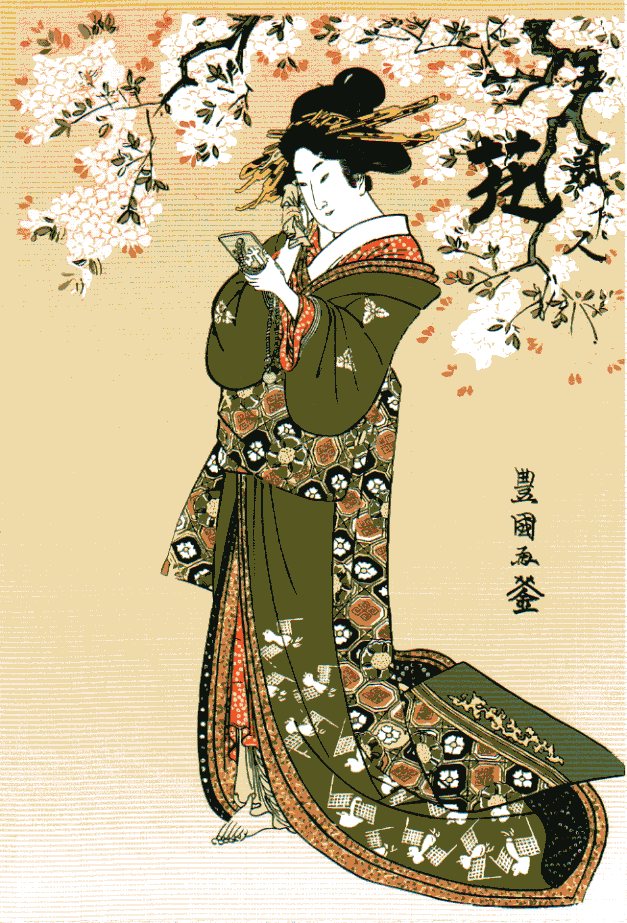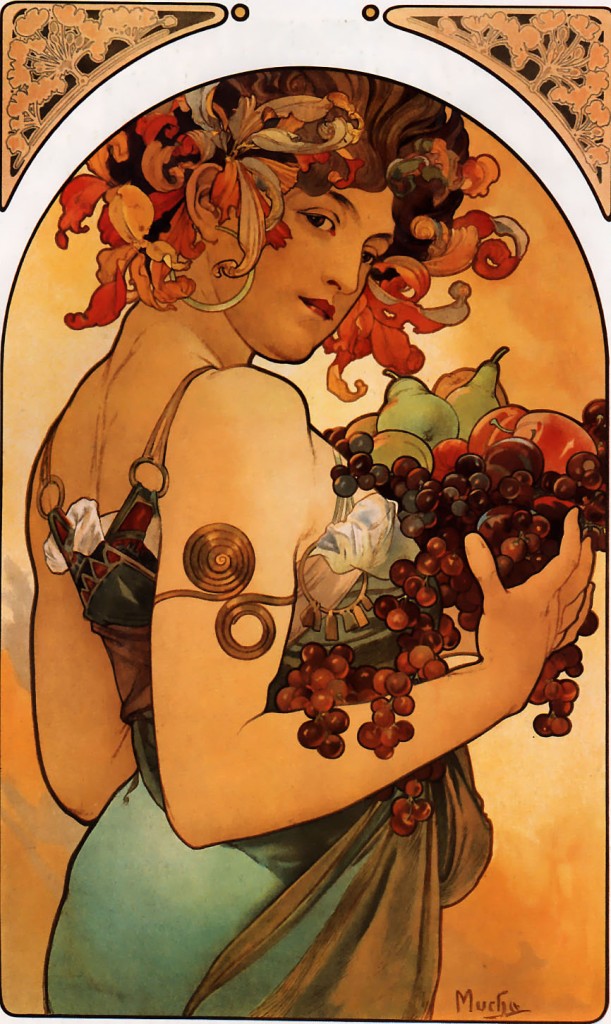1890-1914
Art Nouveau is considered the first “modern” style. It was the first time that design was promoted through mass communication. It was the first self-conscious attempt by Western culture to create something new, although ironically it was the child of the Arts & Crafts movement, which was inspired by the Gothic-era crafts of bookmakers and illustrators. Yet, at the turn of the century, artists and designers were looking forward to the future.
The turn of the century was an age of innovation, introducing modern conveniences such as the car and the telephone, electricity, the department store, and the skyscraper. Cities were mushrooming, nationalism was on the rise, religion was being questioned, and the role of women was shifting. Art Nouveau — the new art — reflected these transformations in an exuberant style that emphasized nature and beauty and optimism.
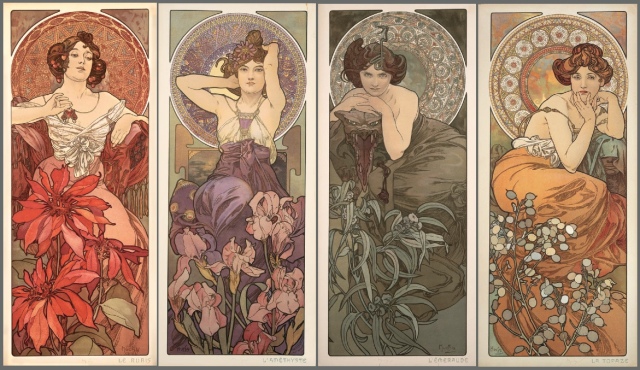
The Precious Stones:
Ruby-Emerald-Amethyst-Topaz
Alphonse Mucha 1900
It was also the first style that tried to deal with modern psychology and sexuality. One could say that Art Nouveau was an emotional style. It found world-wide appeal at the turn of the century with idea that one can have an erotic wardrobe, or a sexy chair, or a tragic book. Emotion in design is something we’ve moved away from in the twenty-first century, with our love of technology and impersonal communication. But the whole range of emotions were expressed through everyday objects in Art Nouveau, from immersive experiences of nature to Aubrey Beardsley’s erotic drawings.
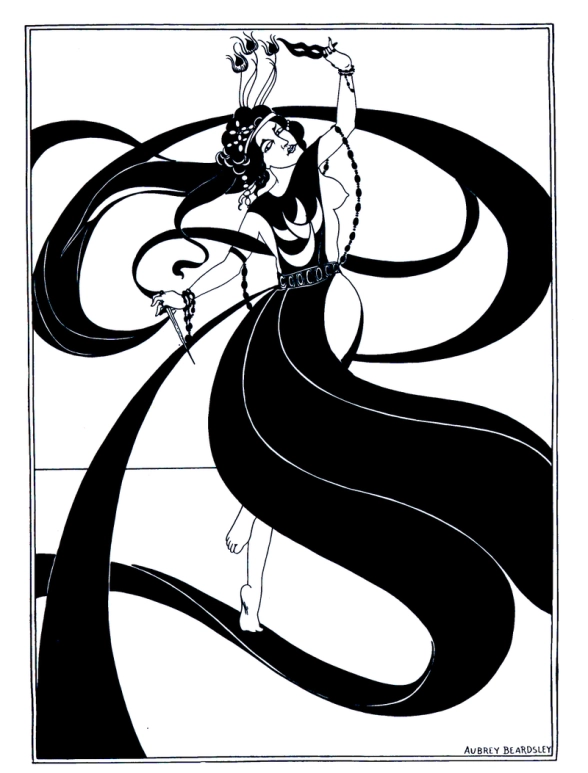
Aubrey Beardsley
Circumstances which gave rise to this style
The end of the nineteenth century is interesting. It’s when Western culture first began to exchange information and ideas through world trade. This is reflected in the great international exhibitions, a powerful phenomenon of the period, with the Paris World’s Fair of 1900 being the largest. This exhibition was attended by 51 million people, when only 38 million people lived in France – Some 500 million people attended international exhibitions during the life of Art Nouveau, and the Art Nouveau style was represented in every one of them.
All the famous makers of Art Nouveau objects were selling their ideas through magazines, journals, trade fairs, exhibitions, and they saw themselves as part of this larger world. Art Nouveau was the first style to sell itself and to be conscious of itself. The great manifestos of Art Nouveau were translated into dozens of languages and publications. So it fostered a compelling cosmopolitan environment.
Art Nouveau was also born out of a free-trade economy. It flourished, in part, because of the growing economy of the first 15 years of the 20th century, but eventually died because of intense nationalism and protectionism before the First World War (1914–1919).
Beginning in the 1890s, artists reached out to a vast number of design sources for inspiration, exploring the cultural roots of their own countries as well as art from Asia and the Middle East. At the same time, artists and designers experimented with new materials and techniques across a broad range of media to create a unified vision of design and architecture.
Ukiyo-e
(浮世絵, Japanese: [u.ki.jo.e], “pictures of the floating world”), is a genre of art that flourished in Japan from the 17th through 19th centuries. Its artists produced woodblock prints and paintings of such subjects as female beauties; kabuki actors and sumo wrestlers; scenes from history and folk tales; travel scenes and landscapes; flora and fauna; and erotica.
From the 1870s Japonism became a prominent trend and had a strong influence on the early Impressionists such as Degas, Manet, and Monet, as well as Art Nouveau artists such as Toulouse-Lautrec.
You can see the stylistic influence of the Japanese Ukiyo-e artist Utagawa Toyokuni (1769–1825) on the Czech artist Alfonse Mucha (1860–1939).
- Alfonse Mucha
The golden age of the poster
One of the means through which Art Nouveau reached a mass audience was the poster. It was used to promote products and entertainment and assumed new heights of artistic expression in the late nineteenth century. Printing technologies such as multiple-color lithography allowed for a more sophisticated range of tones, attracting painters to the medium.
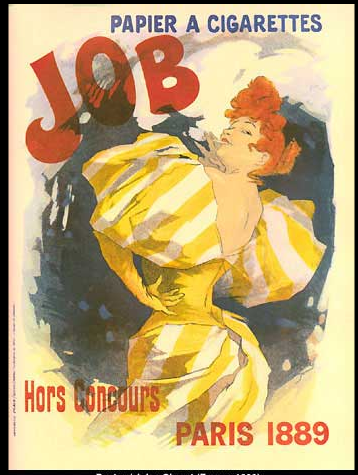
Art Nouveau was a concerted attempt to create an international style based on decoration. It was developed by a brilliant and energetic generation of artists and designers, who sought to fashion an art form appropriate to the modern age. During this extraordinary time, urban life as we now understand it was established. Old customs, habits, and artistic styles sat alongside new, combining a wide range of contradictory images and ideas.

